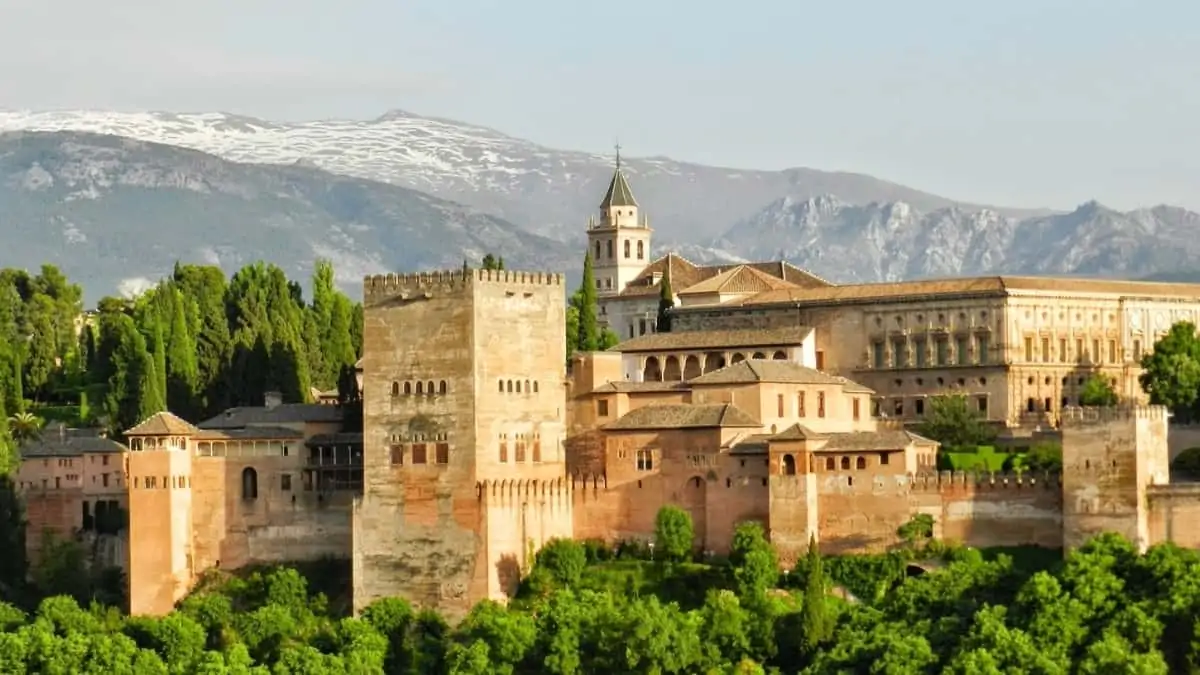Granada Attractions
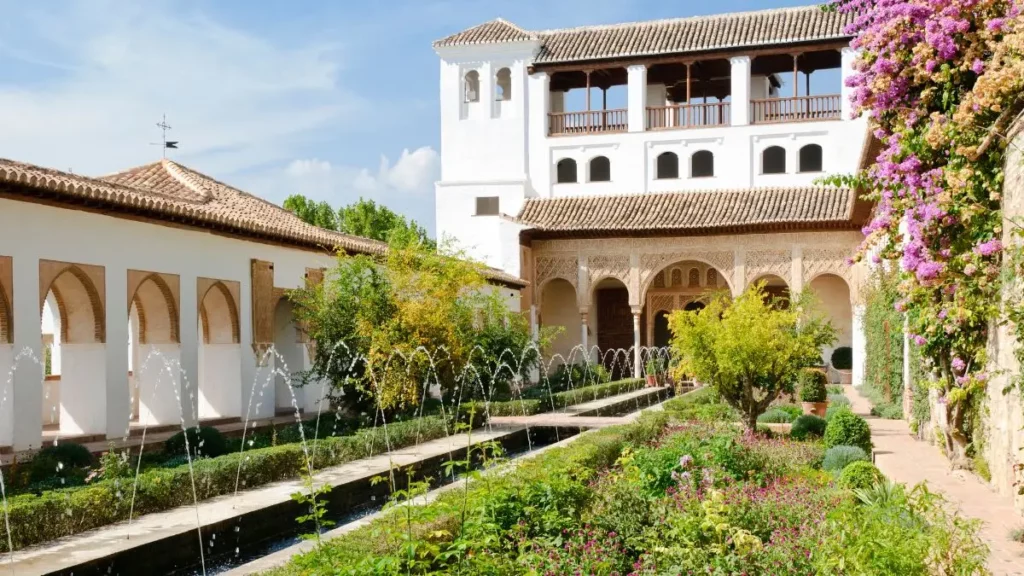
The Alhambra Palace in Granada is the most visited tourist attraction in Spain.
Perched on top of a green plateau in the old Albaicín neighborhood, this massive AD 889 structure is the country’s best example of Islamic architecture.
Alhambra is known in Arabic as Medinat al-Hamra, the ‘Red City,’ because of the color of the numerous buildings that make up the complex.
The intricately decorated rooms and beautiful courtyards represent Moorish art and architecture’s finest achievements in the world.
If you love art and history, the Alhambra Palace is a must-visit destination with lots of things to see.
In this article, we share what to see at Alhambra Palace.
Top Alhambra Tours Tickets
# Guided Alhambra tour of all areas
# Self-guided Alhambra tour
# Alhambra Gardens tickets
Table of Contents
Alhambra Castle’s layout
The Alhambra fortress complex has lots to offer.
Check out the Alhambra map below to get a sense of the castle’s magnitude and its different parts.
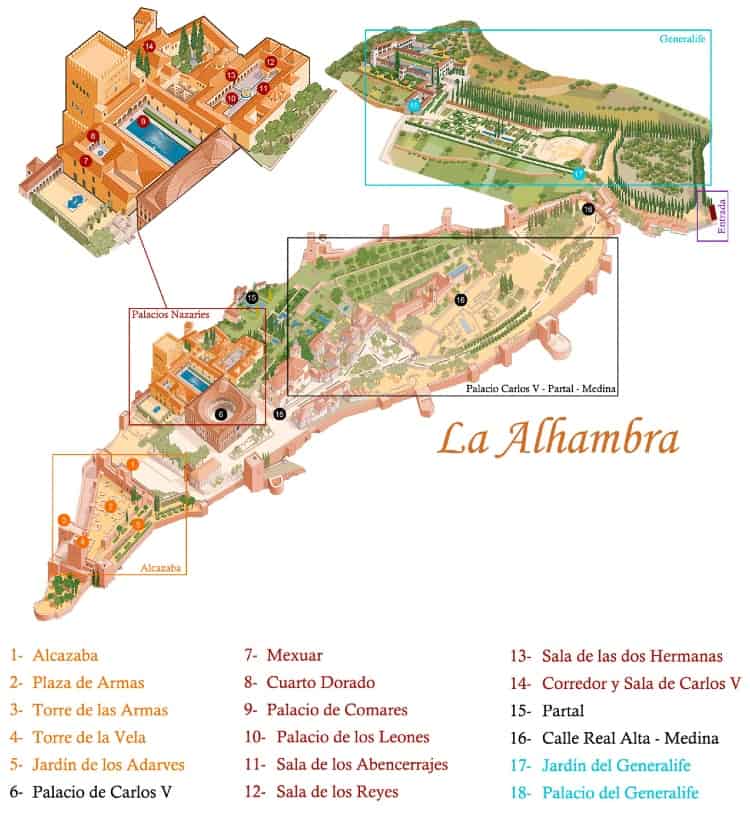
Everything that’s to see at Alhambra de Granada falls under five zones.
- Alcazaba
- Nasrid Palaces
- Generalife
- Charles V Palace and surrounding areas
- Higher Alhambra and the Towers
There is so much to see at Alhambra that most visitors take 4 to 5 hours to explore the Palace.
If you want to see all the highlights of Alhambra, you may have to walk around 3.5 km (2.1 miles).
Different tickets get you access to different parts of the massive complex. Check out all the available Alhambra Castle tours.
Alcazaba

The Alcazaba, a fortress, is one of the oldest parts of the Alhambra.
Mohammed I built ramparts and towers around an already existing castle and established his Royal residence inside the fortress.
His son Mohammed II also lived with his family in Alcazaba till the construction of the Palaces.
After the King moved to the Palace, Alcazaba only served military purposes.
Arms Tower & Square
The Arms Square was the original entrance to the Alcazaba.
Here, the civil population offered many services to the inhabitants of the fortress.
Archaeologists have discovered the foundations of several Arab houses where the civil population may have lived.
Located in the Northern ramparts, the Arms Tower was used to communicate with the city through the neighborhood of Almanzora.
Watch Tower

This Tower, which is 27 meters (89 feet) tall is topped with a bell.
The inhabitants of the fortress used the bell to inform the valley’s farmers when to water their fields at night.
The bell would start striking at 8 pm and continue to do so at regular intervals until 4 am.
Garden of the Ramparts

The Garden of the Ramparts is locally known as Jardines de los Adarves.
Located near the Alcazaba entrance, this garden is on the parapet walk by the ramparts and offers beautiful views over the city of Granada.
Don’t miss out on the lines by poet Francisco A. de Icaza on one of the garden’s walls. It reads:
Give him alms, woman,
For there is nothing in this life,
Like the grief,
Of being blind in Granada
Nasrid Palaces
In Spanish, this Palace is referred to as Palacios Nazaríes, and it has three independent areas:
Mexuar (Selamlik)

Mexuar was the semipublic part of the Palace for Justice Administration and State Affairs.
Comares Palace
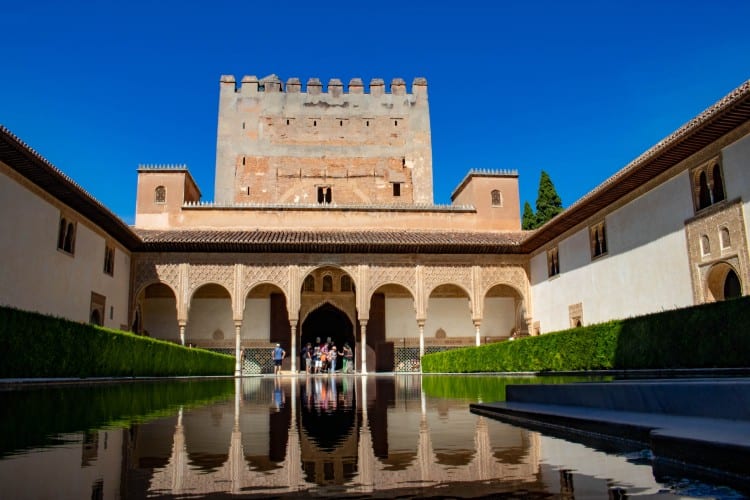
Comares Palace is also known as Palacio de Comares and was the official residence of the King.
Palace of the Lions
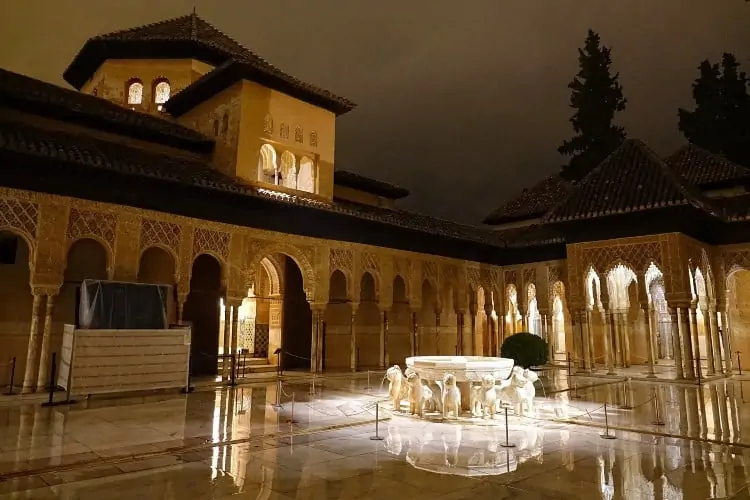
Palace of the Lions was the private area of the Palace, where the King’s harem was located.
Other points of interest to be seen at Nasrid Palaces are –
- Gilded Room and its patio
- Court of the Myrtles
- Hall of the Boat
- Hall of the Ambassadors
- Hall of the Mocarabes
- Patio of the Lions
- Hall of the Kings
- The Emperor’s Chambers
- Queen’s Dressing Room
- Daraxa’s Garden
- The Baths
Generalife Alhambra
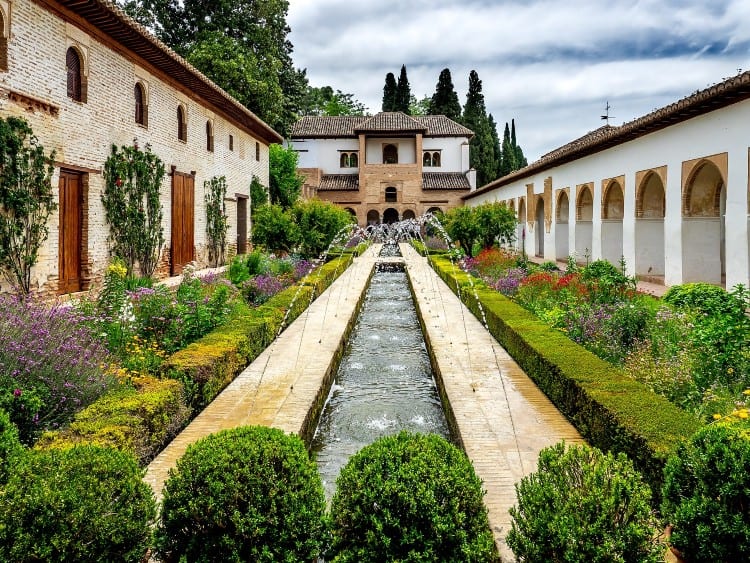
The 13th century Alhambra’s Generalife was the leisure place for Granada’s Kings when they wanted to escape the Palace’s official affairs.
It is on the slopes of the Hill of the Sun (Cerro del Sol), which offers a peaceful view over the city and the rivers Genil and Darro.
Even though Generalife is close to the Alhambra, it is considered to be outside the city.
In fact, once, when Mohammed V was resting in Generalife, a rebellion broke out in Alhambra.
Compared to the Alhambra fortress, Generalife’s architecture is straightforward, with no decorative excess or points of interest built into it to enhance its beauty.
The Patio of the Irrigation Ditch (Patio de la Acequia) is 48.70 meters long (161 feet) and 12.80 meters wide (43 feet) and is a significant part of the Generalife.
The channel of water has several jets on the sides, making it a beautiful sight. The rest of the patio’s area has vegetation.
Don’t miss out on the old cypresses in the verandas of Court of the Sultana’s Cypress Tree.
The most famous of these trees is the Cypress of the Sultana, under which King Boabdil’s wife used to meet a knight of the Abencerrajes family.
When the King came to know, he had the Knight’s family and his tribe killed.
Charles V Palace and surrounding areas
Besides the Palace, this area has three other attractions for visitors to explore.
Charles V Palace
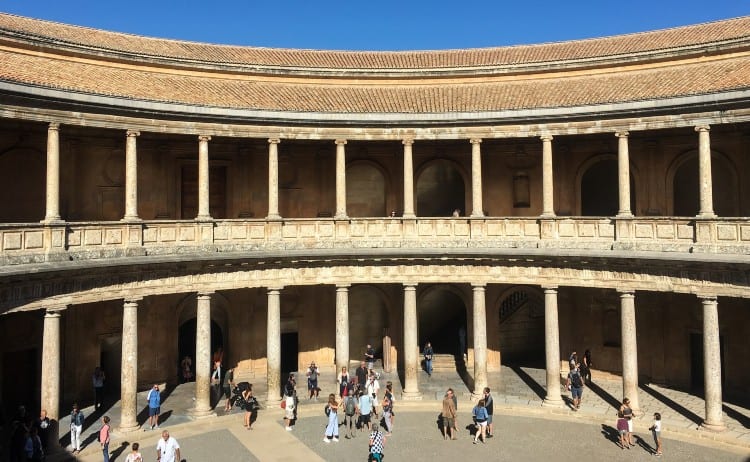
The Palace of Charles V is a square building with a main facade measuring 63 meters (206 feet) wide and 17 meters (56 feet) high.
Don’t miss its unique circular patio, a highlight of its architectural design.
Construction of this Renaissance-style Palace began in 1527 and continued until its completion in 1957.
Justice Tower
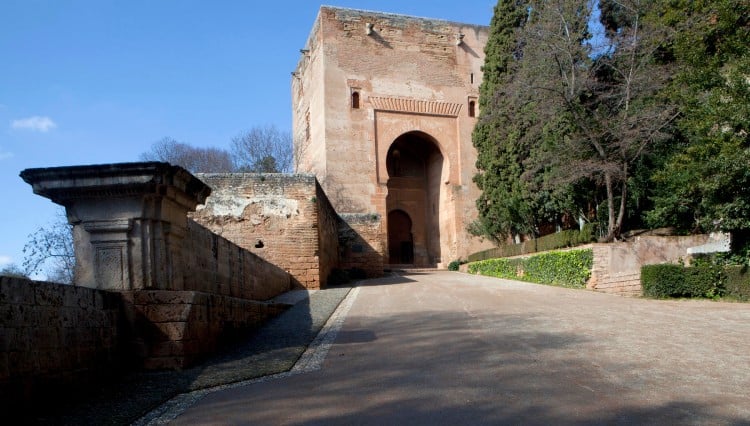
The Justice Tower has many names, such as Torre de la Justicia, Gate of Justice, Esplanade’s Gate, etc.
It is on the southern rampart of the fortress, next to Charles V Pillar.
If you have already bought your tickets online, this is the gate through which you will enter.
Justice Gate’s facade has a horseshoe arch, which is hard to miss as you walk in.
Square of the Cisterns
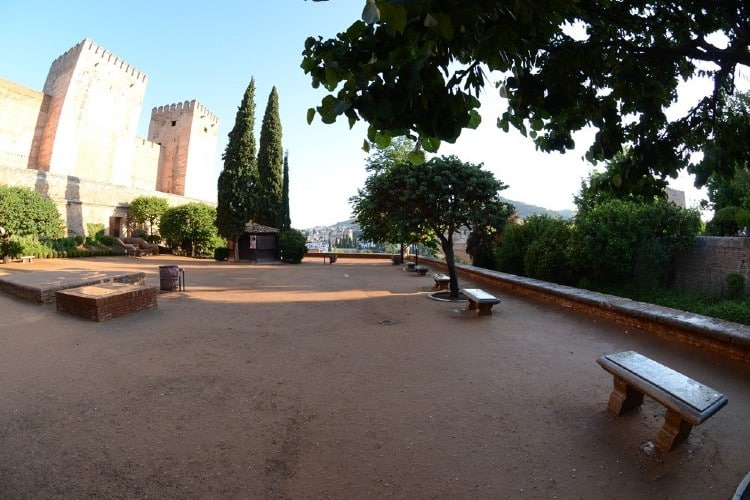
Initially, this square was filled with large cisterns that stored water for the nearby royals.
These cisterns were 34 meters (111 feet) long, 6 meters (20 feet) wide, and 8 meters (26 feet) high, but when they outlived their use, they were buried under soil, along with the surrounding streets to form the Square of the Cisterns.
Wine Gate
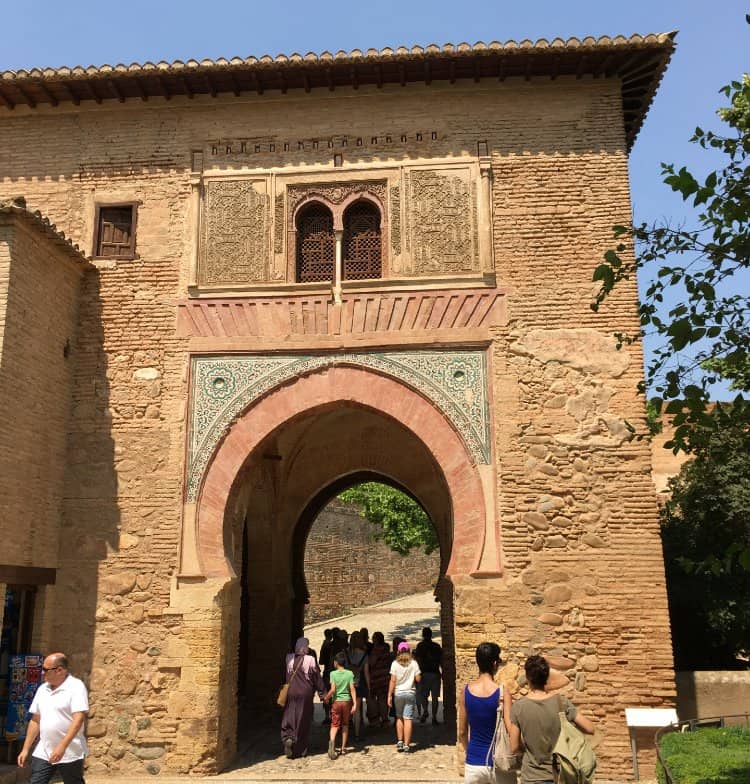
The Wine Gate is supposed to be one of the oldest constructions in the Alhambra Fortress.
People entering Alhambra would leave the untaxed wine at this gate, giving it the name.
Higher Alhambra and the Towers
The Higher Alhambra is an elevated section of the Alhambra complex, offering stunning views over Granada and the surrounding landscape.
This part of the Fortress has 10 Towers:
- Rauda Tower
- Tower of the Mihrab
- Ladies Tower
- Tower of the Points
- Tower of the Judge
- Tower of the Captive
- Tower of the Princesses
- Water Tower
- Tower of the End of the Street
- Tower of the Seven Floors
Each of these Towers has fascinating stories behind their names, and a guided tour of Alhambra is the best way to learn about them.
Garden of the Partal
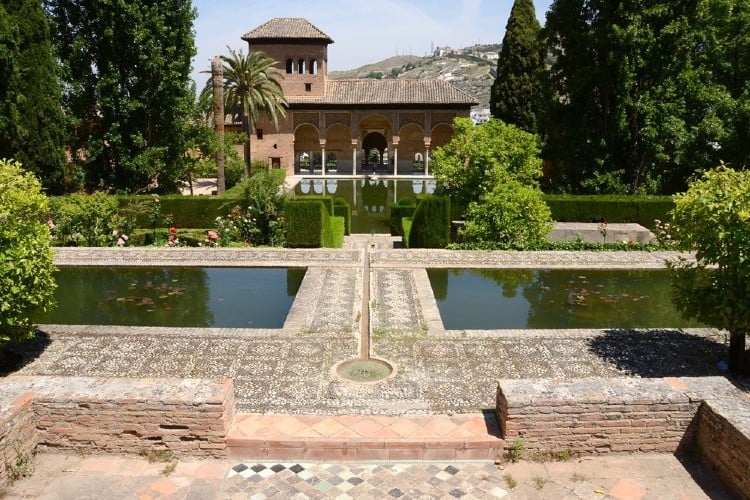
The Garden of the Partal is locally known as Jardines del Partal.
This area used to be the gardens that surrounded the royal palaces.
During the Arab period, this area saw many buildings occupied by the rich who could afford to live around the Royal Palace.
Upper Alhambra
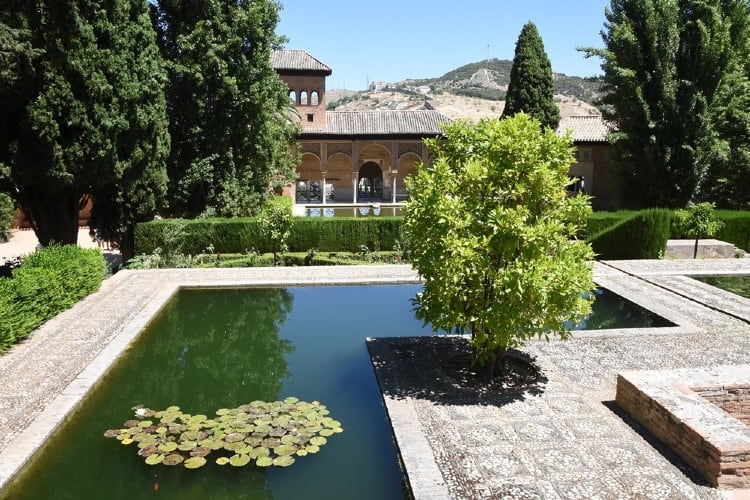
The Upper Alhambra, also known as Alhambra Alta, was higher than the Palaces, separated by a moat.
During the Arab period, this was a small town with many higher-ranking officials of the Court and religious and administrative centers living there.
However, once Granada fell, they had to abandon the area, which was then destroyed or rebuilt.
| Alhambra Tours | Adult price (12+ yrs) | Child price (3-11 yrs) |
|---|---|---|
| Guided Alhambra tour of all areas | 49 Euros | 25 Euros |
| Self-guided Alhambra tour | 25 Euros | 17 Euros |
| Alhambra Gardens tickets (everything except Nasrid Palaces) | 50 Euros | 40 Euros |
| Alhambra Night Tour (optional Nasrid Palaces/Gardens) | 15 Euros | 11 Euros |
| Small group guided tour | 65 Euros | 35 Euros |
| Private walking tour of Alhambra | 200 Euros | 200 Euros |
*Kids 2 years and younger get in for free.
If you haven’t planned in advance, check out how to purchase Alhambra tickets at the last minute.
Museums at Alhambra
Alhambra has three Museums, two of which are in the Palace of Carlos V, and the third is next to Mosque Baths.
Alhambra Museum
Location: Palace of Carlos V
The Alhambra Museum is on the lower level of the Palace, in the South wing.
The Museum depicts the Hispano-Muslim culture and art through seven permanent exhibitions in its seven halls.
Alhambra Museum is open from 8.30 am to 6 pm, but on Sundays and Tuesdays, it closes early at 2.30 pm.
Admission to the Museum is free, and it remains closed on Mondays.
Museum of Fine Arts
Location: Palace of Carlos V
The Museum of Fine Arts is on the upper level of the Palace and displays sculptures and paintings from the 15th to the 20th century.
Also on display are masterpieces of Baroque, Neoclassicism, Romanticism, and grenadine paintings from the 19th and 20th centuries.
This Museum is open from 9 am to 6 pm, and the entrance ticket is 1.5 Euros. EU Citizens can walk in for free.
Museum of Ángel Barrios
Location: Next to the Mosque Baths
This small museum is a tribute to Grenadine composer and guitarist Angel Barrios (1882-1964).
The exhibition explores his life’s story using his memorabilia, furniture, and paintings from his private collection.
It is open from 8.30 to 6 pm, and admission is free.
So what are you waiting for?
Book Self-Guided TourMany tourists book Alhambra tours from Seville or from Malaga, which also include transport. These tours start early and usually last 12 to 13 hours.
